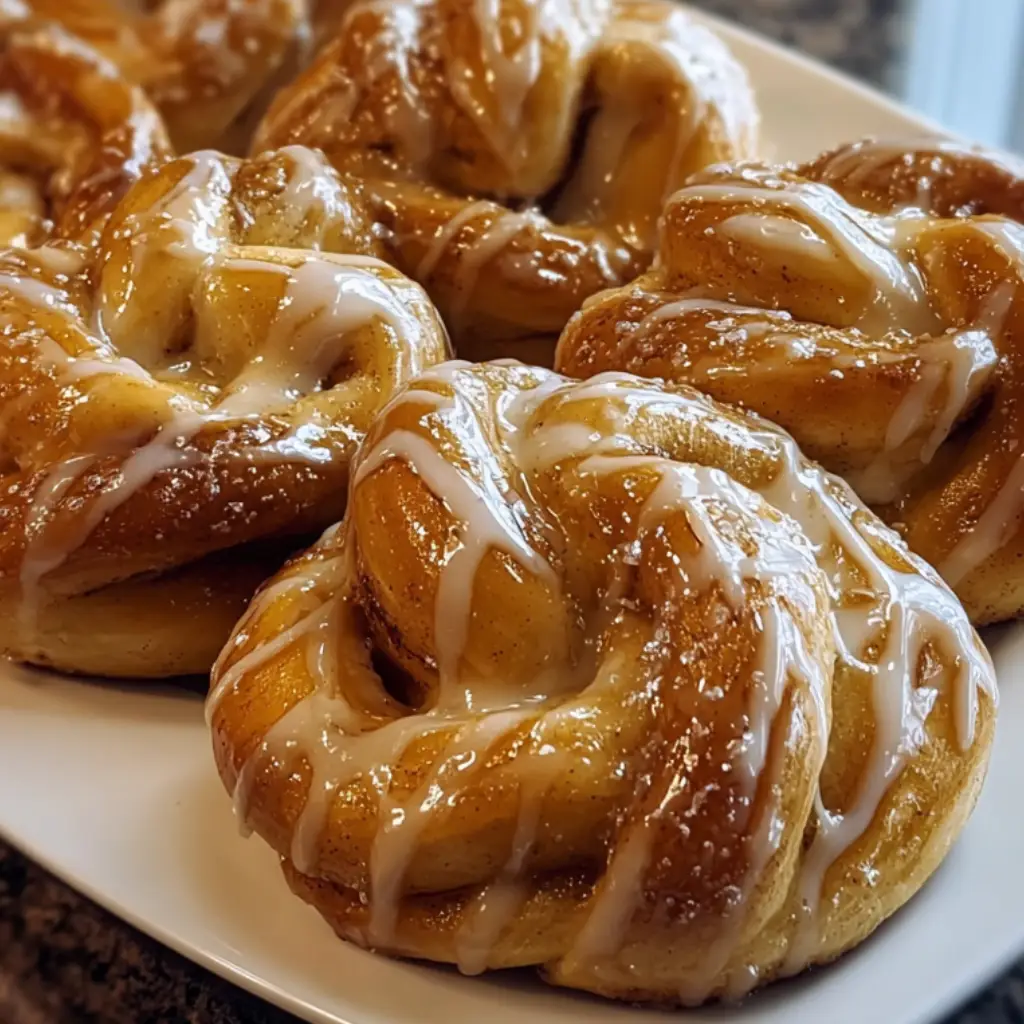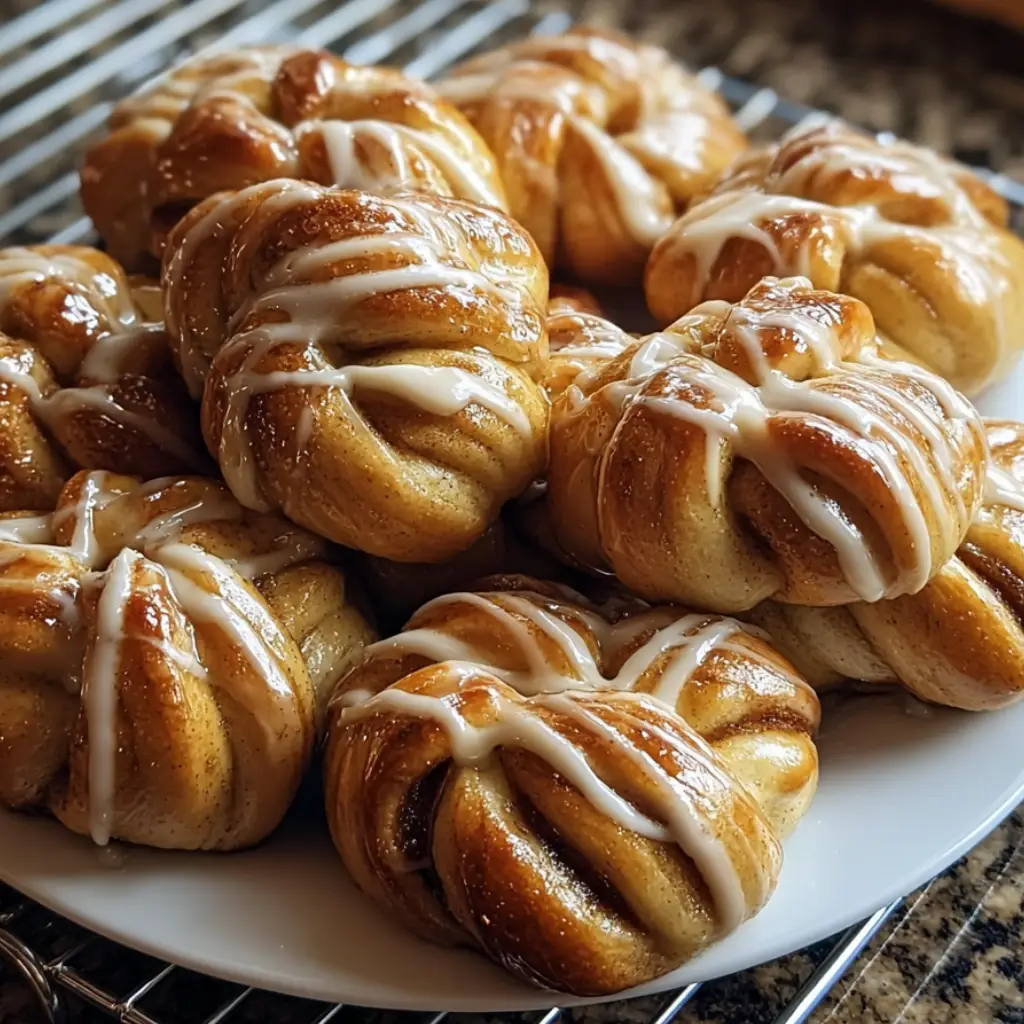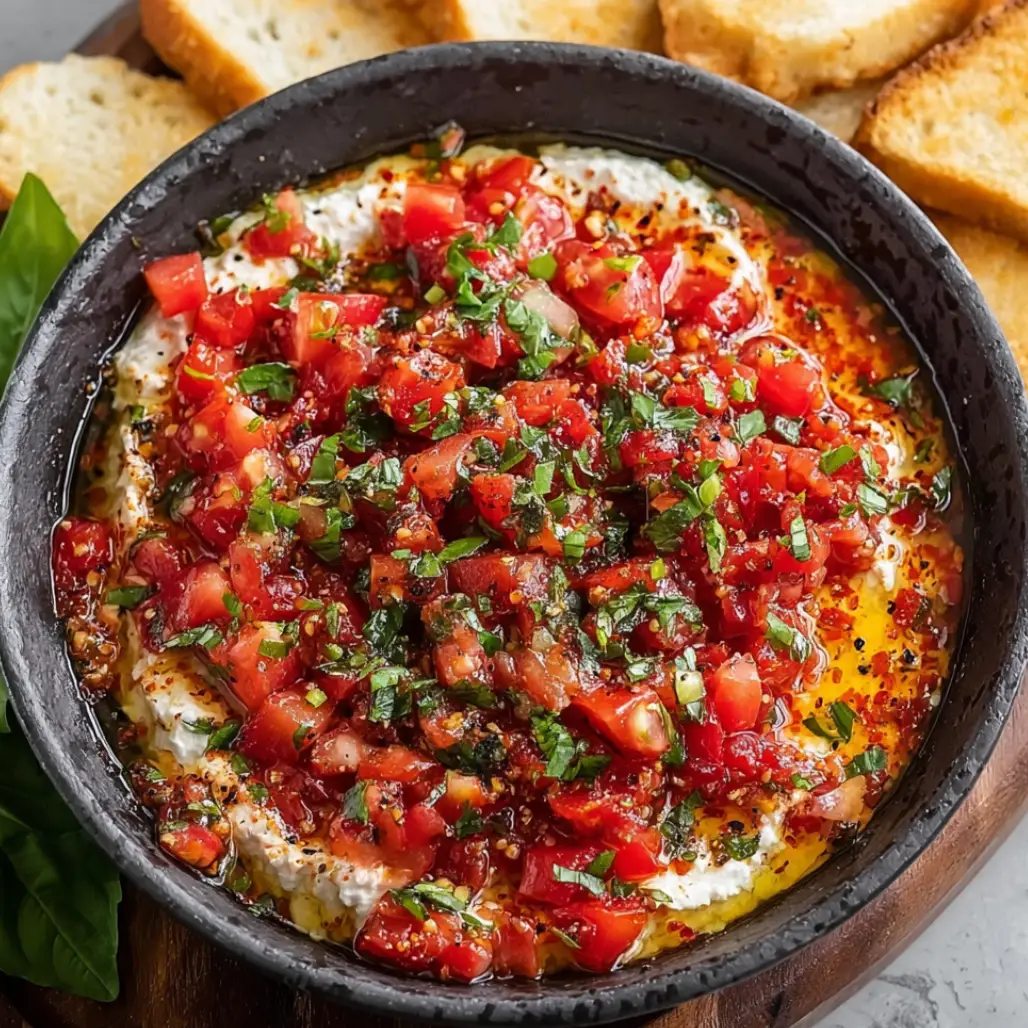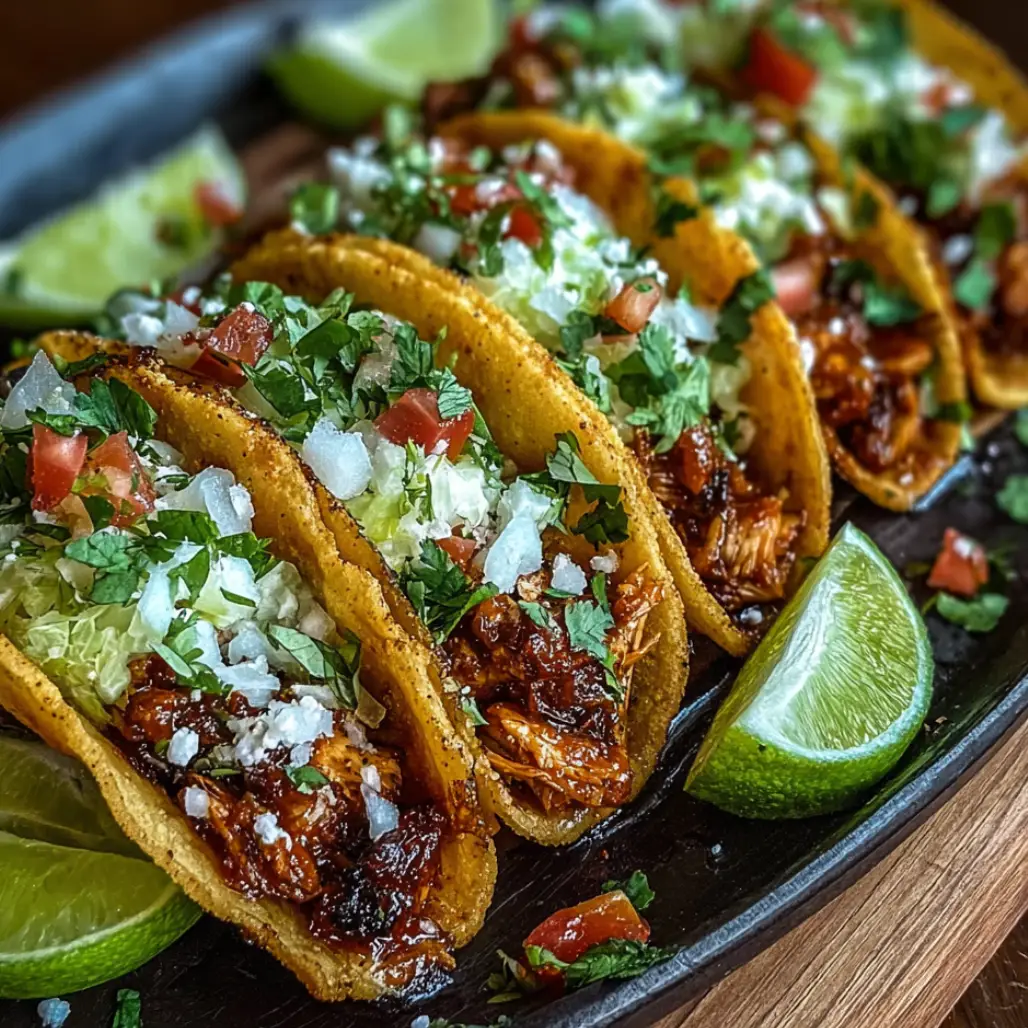| Prep Time: 20 minutes | Cook Time: 15 minutes | Total Time: 1 hour 45 minutes | Serves: 12 |
|---|
When autumn mornings call for something extraordinary to accompany your first cup of coffee, cinnamon knots with coffee icing deliver the perfect harmony of warm spices and rich coffee flavors because they transform simple yeast dough into an irresistible treat that bridges the gap between breakfast pastry and afternoon indulgence. These delightful twisted creations showcase the magical combination of cinnamon-sugar filling and aromatic coffee glaze, creating a sophisticated yet comforting experience because the knot shape allows for maximum surface area to hold both the spiced butter coating and the luxurious coffee-infused icing that makes each bite memorable.
Why This Cinnamon Knots with Coffee Icing Recipe Works
The brilliance of these cinnamon knots with coffee icing lies in their unique twisted shape because it creates more surface area for the cinnamon-sugar mixture to adhere while providing multiple pockets for the coffee icing to settle into delicious pools of flavor. Unlike traditional cinnamon rolls that can become heavy or dense, the knot formation allows for better heat circulation during baking, resulting in consistently light and fluffy texture throughout because air can flow around each individual piece.
This recipe succeeds where others fall short because it uses rapid-rise yeast to significantly reduce rising time without compromising flavor development, making it possible to enjoy fresh-baked pastries in just over an hour. The coffee icing provides the perfect counterpoint to the sweet cinnamon filling because its slight bitterness balances the rich brown sugar while adding sophistication that elevates these knots from simple breakfast fare to gourmet bakery-quality treats.
Essential Ingredients for Perfect Results
3 1/2 cups all-purpose flour (plus extra for dusting work surface)
1 packet rapid-rise instant yeast (2 1/4 teaspoons for optimal rising)
1/4 cup brown sugar (packed, for dough sweetness and yeast activation)
1 teaspoon kosher salt (to enhance flavor and strengthen gluten structure)
3/4 cup whole milk (warmed to 110°F for yeast activation)
6 tablespoons unsalted butter (melted and cooled slightly)
2 large eggs (room temperature for better incorporation)
1/2 cup brown sugar (packed, for cinnamon filling mixture)
1 tablespoon ground cinnamon (preferably Ceylon for superior flavor)
5 tablespoons unsalted butter (softened, for spreading on dough)
2 tablespoons unsalted butter (for coffee icing base)
1/3 cup pure maple syrup (adds complexity to the icing)
3/4 cup powdered sugar (sifted, for smooth icing consistency)
1 teaspoon instant coffee (or instant espresso for stronger flavor)
The Art of Creating Exceptional Cinnamon Knots with Coffee Icing
Creating exceptional cinnamon knots with coffee icing requires understanding the delicate balance between proper dough development and timing because yeast dough needs adequate rising time while the coffee icing demands precise consistency to achieve the perfect drizzling texture. The key lies in respecting each component’s unique requirements while orchestrating their combination into a harmonious final product that showcases both technical skill and flavor sophistication.
Success depends on maintaining proper temperatures throughout the process because yeast is sensitive to heat extremes while butter and coffee icing require specific consistencies for optimal results. The knot-shaping technique, while initially challenging, becomes intuitive with practice and creates the distinctive appearance that sets these pastries apart from conventional cinnamon rolls because the twisted formation allows for even baking and maximum flavor distribution.
Step-by-Step Instructions for Perfect Results
Begin by combining the flour, rapid-rise yeast, brown sugar, and salt in a large mixing bowl because proper ingredient distribution ensures even fermentation and consistent flavor development throughout the dough. Whisk these dry ingredients thoroughly to prevent any clumping that could create uneven texture in the finished knots.
Professional Tip: Ensure your flour is properly measured using the spoon-and-level method because too much flour will create dense, heavy knots instead of the desired light and fluffy texture.
Step 1: Proper dry ingredient mixing creates the foundation for successful yeast activation and even dough development throughout the rising process.
In a separate microwave-safe bowl, warm the milk to exactly 110°F using a kitchen thermometer because this precise temperature activates the yeast without killing it while ensuring optimal fermentation conditions. Add the melted butter and beaten eggs to the warm milk, whisking gently to combine all liquid ingredients evenly.
Professional Tip: Temperature accuracy is crucial because milk that’s too hot will kill the yeast while milk that’s too cool will prevent proper activation and rising.
Step 2: Accurate temperature control ensures successful yeast activation and creates the ideal environment for proper dough development and rising.
Pour the liquid mixture into the flour mixture and stir with a wooden spoon until a shaggy dough forms, then knead by hand on a lightly floured surface for 8-10 minutes until smooth and elastic because proper gluten development creates the structure necessary for light, airy knots. The dough should be slightly tacky but not sticky, requiring minimal flour dusting during kneading.
Professional Tip: Resist the urge to add too much flour during kneading because a slightly sticky dough produces more tender results than one that’s too dry.
Step 3: Adequate kneading develops gluten structure while maintaining proper hydration levels for optimal texture in the finished cinnamon knots with coffee icing.
Place the kneaded dough in a greased bowl, cover with a damp kitchen towel, and let rise in a warm, draft-free location for 30-45 minutes until doubled in size because rapid-rise yeast works quickly under ideal conditions. The dough is ready when it springs back slowly when gently pressed with a finger.
Professional Tip: Create a warm rising environment by placing the bowl on top of the refrigerator or in an oven with just the light on.
Step 4: Proper rising conditions ensure optimal yeast activity and create the light, airy texture that distinguishes excellent cinnamon knots from dense, heavy alternatives.
While the dough rises, prepare the cinnamon filling by combining the brown sugar and cinnamon in a small bowl, mixing thoroughly to distribute the spice evenly because uniform distribution prevents hot spots of cinnamon flavor that can overwhelm individual bites. Set aside the softened butter for easy spreading later.
Professional Tip: Let butter come to room temperature naturally rather than microwaving because properly softened butter spreads more evenly without tearing the delicate dough.
Step 5: Proper filling preparation ensures even flavor distribution and prevents tearing during the assembly process of these delicate pastries.
Once doubled, punch down the risen dough and turn it onto a lightly floured surface, rolling it into a 16×14-inch rectangle approximately 1/4-inch thick because consistent thickness ensures even baking throughout all the knots. Spread the softened butter evenly across the entire surface, leaving a 1/2-inch border around the edges.
Professional Tip: Use gentle, even pressure when rolling to maintain consistent thickness without overworking the dough or creating tough spots.
Step 6: Uniform rolling and butter distribution create the foundation for consistent flavor and texture in every finished cinnamon knot with coffee icing.
Sprinkle the cinnamon-sugar mixture evenly over the buttered dough surface, then fold the dough in half lengthwise and press gently to seal the edges because this creates layers of filling that will create beautiful spirals when the knots are formed. Cut the folded dough into 12 equal strips using a sharp knife or pizza cutter.
Professional Tip: Use dental floss instead of a knife to cut filled dough because it slices cleanly without dragging or compressing the delicate layers.
Step 7: Careful folding and cutting techniques preserve the layered structure that creates the distinctive appearance and flavor distribution in finished knots.
Take each strip and gently twist it along its length, then tie into a loose knot, tucking the ends underneath to create a neat appearance because proper shaping ensures even baking and attractive presentation. Place the shaped knots on parchment-lined baking sheets, spacing them 2 inches apart to allow for expansion during baking.
Professional Tip: Work quickly but gently when shaping because overhandling can deflate the risen dough and create dense, heavy knots.
Step 8: Proper shaping technique creates the distinctive appearance while maintaining the light, airy texture developed during the rising process.
Cover the shaped knots with a clean kitchen towel and let rise for an additional 20 minutes while preheating the oven to 375°F because this final rise ensures maximum fluffiness and allows the oven to reach optimal baking temperature. The knots should appear slightly puffed and feel light when gently touched.
Professional Tip: Don’t skip the second rise because it’s crucial for achieving the light, tender texture that makes these cinnamon knots with coffee icing exceptional.
Step 9: The final rise period ensures optimal texture development while allowing proper oven preheating for even baking results throughout.
Bake the knots for 12-15 minutes until golden brown on top and cooked through, rotating the pans halfway through baking for even browning because consistent heat distribution prevents some knots from overbaking while others remain underdone. The internal temperature should reach 190°F when properly baked.
Professional Tip: Check for doneness by gently lifting one knot to ensure the bottom is golden brown and sounds hollow when tapped.
Step 10: Proper baking technique ensures even cooking and optimal texture while developing the golden color that indicates perfectly baked pastries.
While the knots bake, prepare the coffee icing by melting the butter with maple syrup in a small saucepan over medium heat, then removing from heat and whisking in the powdered sugar and instant coffee until smooth because the residual heat helps dissolve the coffee granules completely. Adjust consistency with additional powdered sugar or warm water as needed.
Professional Tip: Taste the icing and adjust coffee strength to your preference because instant coffee intensity can vary between brands.
Step 11: Proper icing preparation creates the perfect consistency and coffee flavor balance that complements the sweet cinnamon knots without overwhelming them.
Allow the baked knots to cool for 5 minutes before drizzling with the warm coffee icing because slightly cooled pastries won’t melt the icing completely while still being warm enough for optimal flavor absorption. Serve immediately while the icing is still glossy and the knots retain their warmth.
Professional Tip: Reserve some icing for serving because guests often want extra drizzled over their individual portions.
Step 12: Proper timing for icing application ensures optimal texture and presentation while maintaining the ideal serving temperature for maximum enjoyment.
Professional Tips for Culinary Excellence
Rapid-rise yeast requires specific handling techniques because it’s designed to work faster than traditional active dry yeast, eliminating the need for proofing but requiring more precise temperature control throughout the process. Always check expiration dates on yeast packages because expired yeast will not provide adequate rise, resulting in dense, heavy knots instead of the desired light and fluffy texture.
Moisture management proves crucial when working with yeasted doughs because too much humidity can make dough sticky and difficult to handle while insufficient moisture can create dry, cracked surfaces that won’t rise properly. Cover rising dough with damp towels rather than plastic wrap to maintain optimal humidity levels without creating condensation that could interfere with proper rising.
Coffee icing consistency requires careful attention because it should be thick enough to hold its shape when drizzled but thin enough to flow smoothly over the warm knots. Test consistency by drizzling over your finger – properly mixed icing will hold its ribboned shape briefly before settling into smooth coverage.
Creative Variations to Explore
Transform your cinnamon knots with coffee icing into seasonal specialties by incorporating maple extract into the dough for autumn appeal, or add orange zest to the cinnamon filling for bright citrus notes that complement the coffee icing beautifully. Consider substituting cardamom for half the cinnamon to create Scandinavian-inspired flavors that pair exceptionally well with strong coffee icing.
For those who prefer different flavor profiles, experiment with chai spice blends in place of plain cinnamon because the complex spices create sophisticated depth while maintaining harmony with the coffee elements. Vanilla-coffee icing variations can be achieved by adding pure vanilla extract to the coffee mixture, creating more nuanced flavor complexity.
Create filled variations by adding chopped pecans or walnuts to the cinnamon-sugar mixture because nuts provide textural interest and rich flavors that complement both the spices and coffee components. Cream cheese variations of the icing can be created by substituting softened cream cheese for half the butter, resulting in tangy richness that balances the sweet cinnamon filling.
Perfect Pairing Ideas for Complete Meals
Serve your cinnamon knots with coffee icing alongside fresh fruit platters featuring seasonal berries and sliced apples because the natural acidity provides refreshing contrast to the rich, sweet pastries while adding nutritional balance to indulgent breakfast spreads. Consider exploring various breakfast favorites that complement coffee-flavored baked goods perfectly.
For special brunch occasions, pair these knots with savory items such as egg dishes or breakfast meats because the combination of sweet and savory creates satisfying meal variety while allowing guests to customize their plates according to personal preferences. Browse through elegant savory sides that balance sweet breakfast pastries.
Complement your coffee-themed breakfast with carefully selected beverages that enhance rather than compete with the coffee flavors in the icing, such as fresh orange juice, herbal teas, or specialty coffee drinks that create cohesive flavor themes throughout the meal.
Discover More Culinary Adventures
Enhance your brunch presentations with creative appetizers that bridge the gap between sweet and savory courses, creating opportunities for interactive dining and flavor exploration that keeps guests engaged throughout extended meal periods.
Expand your baking repertoire with complementary dessert recipes that showcase similar techniques but different flavor profiles, allowing you to build confidence with yeasted doughs while exploring various icing and glaze applications that enhance your overall baking skills.
Create themed menus that incorporate dips and marinades for interactive dining experiences where guests can customize their food according to personal preferences while exploring different flavor combinations that complement the main dishes.
Storage Guidelines for Food Safety
Store leftover cinnamon knots with coffee icing in airtight containers at room temperature for up to three days because proper storage prevents staleness while maintaining food safety standards throughout the recommended consumption period. Avoid refrigerating these pastries because cold temperatures can make the dough tough and the icing hard.
For longer storage, freeze unfrosted knots in freezer-safe containers for up to three months because freezing halts deterioration while preserving most of the original texture and flavor qualities. Thaw frozen knots at room temperature and refresh in a 350°F oven for 5 minutes before applying fresh coffee icing for optimal results.
Prepare components separately for make-ahead convenience because the dough can be shaped and refrigerated overnight before the final rise and baking, while coffee icing can be made ahead and gently rewarmed before serving to restore optimal consistency.
The Science Behind Perfect Yeast Baking
Rapid-rise yeast contains smaller granules and additional dough conditioners that accelerate fermentation because the modified structure allows for faster activation and gas production, reducing traditional rising times by approximately half without compromising flavor development. Understanding this process helps bakers achieve consistent results because proper yeast management directly impacts final texture and taste.
Gluten development through kneading creates the protein network that traps carbon dioxide produced by yeast fermentation, resulting in the light, airy texture that distinguishes excellent cinnamon knots with coffee icing from dense, heavy alternatives. The balance between adequate kneading and overworking requires understanding how gluten responds to mechanical action and time.
Temperature control affects every aspect of yeast baking because enzymes function optimally within specific ranges, while extreme temperatures can inhibit or kill yeast activity completely. This scientific understanding allows bakers to troubleshoot problems and adjust techniques for consistent success across different environmental conditions.
Troubleshooting Common Issues
If your cinnamon knots with coffee icing turn out dense or heavy, the most likely causes include expired yeast, incorrect liquid temperatures, or excessive flour addition during kneading because each of these factors interferes with proper yeast activity and gluten development. Always check yeast expiration dates and use a thermometer for accurate temperature measurement.
Uneven baking typically results from inconsistent shaping, overcrowded pans, or improper oven calibration because heat circulation requires adequate space around each pastry while accurate temperatures ensure proper cooking throughout. Rotate pans halfway through baking and ensure proper spacing for optimal results.
Coffee icing that’s too thick or too thin can be adjusted by gradually adding warm water to thin or additional powdered sugar to thicken because proper consistency ensures attractive presentation and optimal flavor distribution. Always make adjustments gradually because it’s easier to achieve proper consistency through small increments.
Additional Inspirations for Baking Enthusiasts
Explore complementary side dishes that enhance coffee-themed breakfast presentations while providing nutritional balance and visual appeal that creates restaurant-quality dining experiences in home kitchens.
Discover creative salad options that provide refreshing contrast to rich, sweet baked goods because balanced menus incorporate various textures and flavors that satisfy different palate preferences while maintaining overall meal harmony.
Build your confidence with yeasted doughs by exploring other breakfast pastry techniques that utilize similar methods but different flavor profiles, allowing you to develop skills while creating variety in your baking repertoire that keeps family and guests excited about homemade treats.
Conclusion
These cinnamon knots with coffee icing represent the perfect fusion of traditional comfort baking and sophisticated flavor development because they deliver bakery-quality results through accessible home techniques that any dedicated baker can master with practice and attention to detail. The combination of aromatic cinnamon spicing and rich coffee icing creates a memorable sensory experience that elevates simple breakfast moments into special occasions worth savoring and sharing.
The versatility of this recipe opens endless possibilities for customization and seasonal adaptation because the basic technique can accommodate different spice blends, icing variations, and presentation styles without compromising the essential character that makes these knots so appealing. Whether served for special holiday brunches or enjoyed as weekend morning treats, cinnamon knots with coffee icing provide the foundation for countless memorable experiences that bring people together around the table while celebrating the simple pleasure of expertly crafted homemade pastries.









